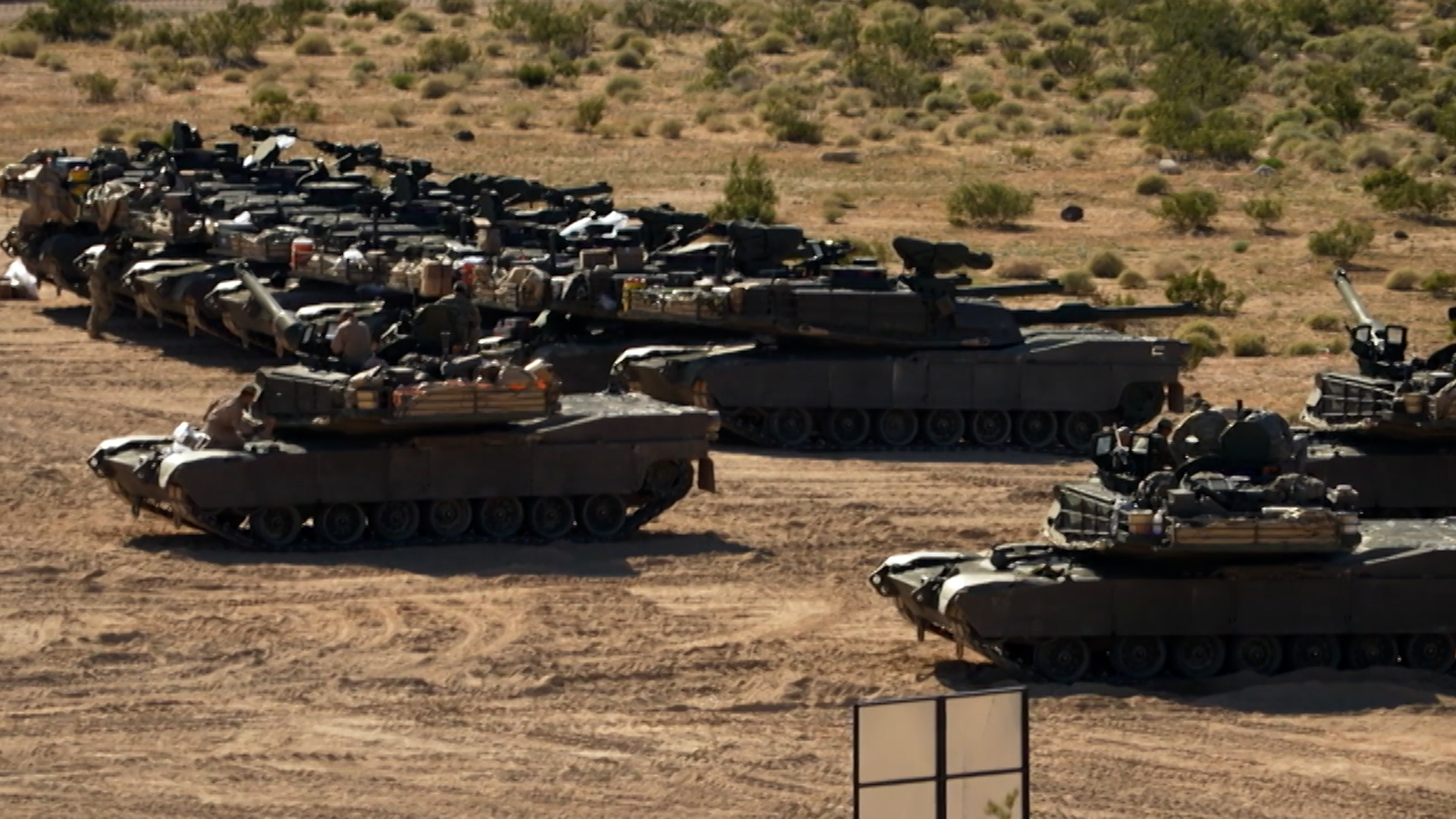
Air raid shelters, submarine deals and new tanks: How Poland's preparing for war

Poland has announced that it has picked Swedish firm Saab to construct three submarines for it as Warsaw continues to improve its defences in the Baltic Sea.
Saab, an aerospace and defence company, will make the three A26 submarines in a deal worth €2.3bn, while Stockholm will buy armaments from Poland as part of a wider cooperation agreement.
The country has been steadily bolstering its defences after Russia's invasion of its eastern neighbour Ukraine more than three-and-a-half years ago.
Sweden will also hand over a "gap-filler" submarine for Poland to train on.
BFBS Forces News has looked into how Poland is preparing for war at sea, on land and in the air as well as the country's level of defence spending.

At sea
First, looking deeper into the deal between Stockholm and Warsaw, these submarines, which will be made under Poland's Orka submarine programme, are built to combat seabed warfare and might aid Nato with surveillance and stopping attacks.
The submarines are scheduled to be supplied by Sweden in 2030 as the region tries to monitor alleged tampering with underwater infrastructure.
"Sweden presented the best offer in terms of all criteria, delivery time and operational capability, especially in the Baltic Sea," said Polish deputy prime minister Wladyslaw Kosiniak-Kamysz.
The UK will be contributing equipment to the submarines.
Meanwhile, Warsaw is purchasing three new Miecznik-class frigates, similar to the Royal Navy’s Type 31 frigates, and could buy five more on top of that.

On land
Considering Poland shares a 250-mile border with Belarus, one of Moscow's allies, Warsaw is looking to expand its army.
Poland wants to grow its land force to 300,000 by 2030, and it is also procuring equipment to match its size and power.
The state has arranged to obtain 1,300 tanks, such as over 800 South Korean K2 Black Panthers and 250 M1A2 SEPv3 Abrams, equipped with mine ploughs and combat dozer blades.
The Poles have established an Abrams Tank Academy in Poznan so their personnel will not have to leave the country to train on the American tank.
In terms of artillery, Poland is ordering 182 Krab self-propelled howitzers and 200 South Korean K9 Thunder self-propelled howitzers to replace the howitzers it gave to Kyiv.
Elsewhere, its army will be receiving 96 AH-64E Apache attack helicopters.
One of the standout measures being proposed to prepare Poland for war is a policy of voluntary military training called "wGotowości" (Readiness).
The training will focus on first aid, survival skills, cyber and the basics of security, and will be completed over a day on weekends.
Prime minister Donald Tusk said he wants to train 100,000 volunteers per year within two years.
Warsaw is also adapting to the heightened risk from Russia on land through its legislature, as its parliament has signed off on the country's withdrawal from the Ottawa Convention, which prohibits the use of anti-personnel landmines.
There were also reports that the country is thinking about planting the mines on its eastern border.

And in the air
Poland has been reviewing its bomb shelters after Moscow's drones violated its airspace in September, leading Warsaw to trigger Nato's Article 4 in response.
The country has more than 1,000 facilities appropriate for its population if there is an air attack, according to the Kyiv Independent.
Alongside the air raid shelters, the UK has been helping Poland as part of Nato’s Operation Eastern Sentry following the airspace incursion.
Eastern Sentry is the constant air patrol on the country's eastern border to stop Moscow breaching Nato airspace.
Besides these measures, Poland has also been building up its air force after it signed a $4.6bn deal to acquire 32 conventional take-off and landing F-35As.
The first group of Polish F-35 pilots finished training on the aircraft over the summer.
Defence spending
Poland has one of the top three largest armed forces in Nato, behind the United States and Turkey, and far ahead of allies such as Germany, France and the United Kingdom.
Warsaw also spends the highest percentage of its GDP on defence compared with its allies, with Lithuania and Latvia following on from it.
Nevertheless, the Polish government revealed that it was going to boost its defence spending this year from 4.1% to 4.7% of GDP, which equates to €30bn.
To put that in context, Chancellor Rachel Reeves announced that the UK Government is committed to spending 2.6% of GDP on defence by April 2027, meaning Poland will spend close to double the UK's share of GDP on defence.









